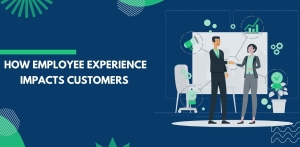Startups often spend hours sending emails, connecting on LinkedIn, or pitching to anyone with the title “investor.” But the reality is most of those efforts go nowhere. Cold outreach feels like a numbers game, but without the right strategy, it's a slow path to frustration. So, how can founders stop wasting time on cold leads and start focusing on real investor opportunities?
Let's look at the most common mistakes startups make and more importantly, how to fix them.
Common Mistakes in Investor Outreach
1. Pitching Without Targeting
One of the biggest mistakes early-stage founders make is sending the same message to a long list of investors without checking if they're a fit. An investor who funds late-stage fintech startups won't be interested in a pre-seed healthtech idea. Without targeting, your pitch becomes just another message in their inbox.
Proper targeting begins with understanding what stage your startup is at and identifying investors who actually invest at that stage. A mismatch here means wasted effort and zero replies.
2. No Personalization
Sending a generic pitch doesn't work. Investors get hundreds of similar messages every week. If your email starts with “Dear Investor” and doesn't mention why you chose them, it shows you didn't do your homework. A lack of personalization is a fast track to being ignored.
Founders should treat each investor like a unique opportunity. Mention a portfolio company they recently backed or reference something insightful from their blog. That small touch can make a big difference in getting noticed.
3. Ignoring the Power of Timing
Another mistake? Reaching out too early or too late. Some startups contact investors before they have a solid pitch, a working product, or real traction. Others wait until they're already running out of time and capital, which puts pressure on the conversation.
Timing matters. If you're still figuring out your business model, it's usually best to focus on building, testing, and learning before you start your investor outreach. Reaching out too soon can lead to a lost opportunity that might not come back.
Why These Mistakes Hurt Your Fundraising Chances
When you send mass emails or contact investors who aren't relevant to your stage or sector, you burn bridges. Even worse, you waste precious time and energy. Founders need to focus their limited bandwidth on high-probability actions. Poor investor targeting also reflects badly on your professionalism, it signals a lack of strategic thinking.
Successful investors leads generation is not about volume; it's about quality. A warm, well-researched lead is always more valuable than ten cold emails that go nowhere.
More importantly, investors talk. Sending careless pitches can hurt your brand before it's even built. Fundraising is not just a numbers game, it's a relationship game.
Shift to Smart Investors Leads Generation
Instead of shooting in the dark, smart founders build systems. Start by identifying your ideal investor: What sectors do they invest in? What's their average check size? Do they typically lead or follow rounds?
Investors leads generation becomes more effective when you build your list around these key filters. Focus on investors who have backed startups similar to yours in size, industry, and geography. This step alone increases the likelihood of a meaningful reply.
Platforms like Crunchbase, PitchBook, and LinkedIn can help with this research, but the key is being intentional. Don't build a massive list, build a strategic one.
Build Meaningful Relationships, Not Just a List
Here's where most cold outreach strategies fail, they treat investors like transactions. But fundraising is a relationship game. Smart founders engage with investors long before they need the check.
Comment on their blog posts. Share and engage with their social media updates. Attend panels or webinars where they're speaking. If you can add value such as thoughtful comments or questions, they're more likely to remember your name later on.
This approach mirrors the mindset promoted by PitchDiary investor relationships are nurtured through trust, timing, and strategy. The goal isn't just to send a message. It's to open a door. When the time comes to raise, you won't be a stranger, you'll be a known, thoughtful founder with a well-aligned vision.
Relationship-building takes longer than mass outreach, but it works better.
Founder's Perspective: What to Do Instead of Cold Outreach
Instead of spending your mornings sending cold emails, spend time building traction and clarity. Investors are more likely to respond when they see a clear product-market fit or early customer validation.
Here are a few things founders can do:
- Refine your deck before reaching out. Keep it clear, visual, and compelling.
- Practice your pitch with mentors and peers. It'll sharpen your delivery.
- Ask for warm intros from founders or advisors—these carry far more weight.
- Track engagement. If you're getting no replies, revise your message, not just your list.
These activities will give you a higher return than mass messaging ever could.
Conclusion
Cold leads aren't always bad, but relying on them without strategy is a losing game. Founders can save time and improve their chances by avoiding common outreach mistakes, focusing on well-aligned investors, and building meaningful relationships early on.
Shift from blasting emails to thoughtful investors leads generation, and you'll see better results, stronger connections, and a smoother fundraising journey. Fundraising is hard, but being strategic makes it manageable.






